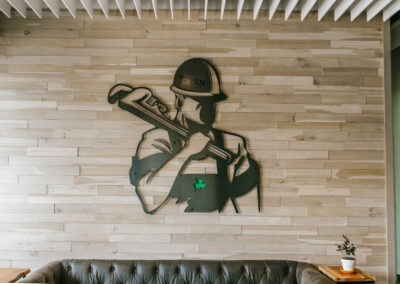A dry fire sprinkler system sounds like an oxymoron, doesn’t it? But the “dry” refers to the pipe during normal operation of the sprinkler system. It’s only when there’s actually a fire occurring on-site, system damage, or system malfunction that the pipe fills with and dispenses water. At all other times, the piping is filled with pressurized air or nitrogen. And while you won’t need a dry sprinkler system in many cases, sometimes it’s the only thing for the job. In conditions where freezing temperatures can occur, dry sprinkler systems are usually the best bet for fire protection.
Ice Build-Up Inside the Dry System
Due to their construction, it’s possible for ice to build up inside the pipe of a dry sprinkler system. This is due to either condensation from the air supply or water trapped inside the pipe. The ice that could get into the piping has the potential to make the system fail or burst. Therefore, it is very important to make sure there is no water in the system. The best way to ensure that ice doesn’t form in the piping is to properly maintain low point drains on the system. This should be done frequently, especially during the cold months. Remember that dry pipe systems need to be tested just as often as wet pipe systems. When a dry pipe system is tested, water fills the piping. Even after the system is drained, there can be water left in parts of the system and over a period of time this water makes its way to the low point drains. Maintaining these drains can prevent costly damage to the dry system, building and its contents.
Obstructions of Water Flow
During a test or inspection, ensuring that water is flowing through the system at the correct rate is very important. Code requires that an internal obstruction investigation be completed every five years. Also, if the test results indicate possible obstructions an internal investigation should be performed.
Air Supply
When a dry system is in its normal condition, the piping of the system has pressurized air or nitrogen in it. An air compressor, nitrogen generator, or nitrogen cylinder supplies the air pressure in these types of systems. They are designed to maintain the pressure inside the system and should operate occasionally. If they operate too frequently it could indicate an issue with your sprinkler system, such as leaks or failure of the compressor. These components, just like the rest of the system, will need regular maintenance. It is a good idea to hire a professional to inspect and perform maintenance on theses components to ensure they are operating correctly.
